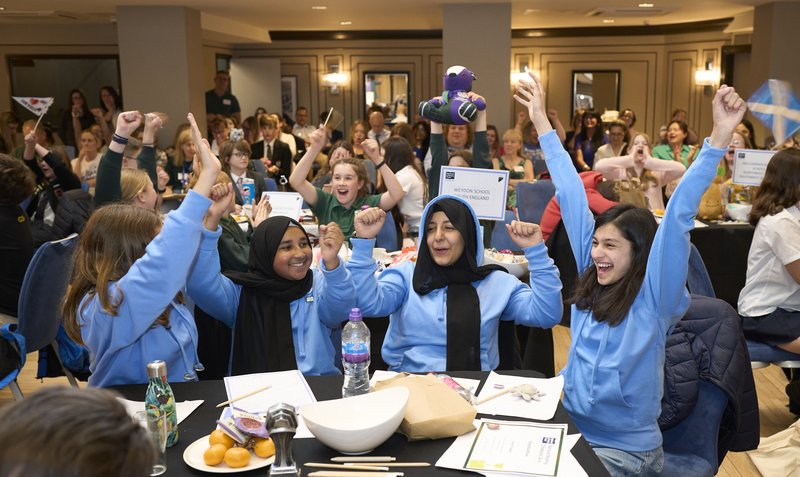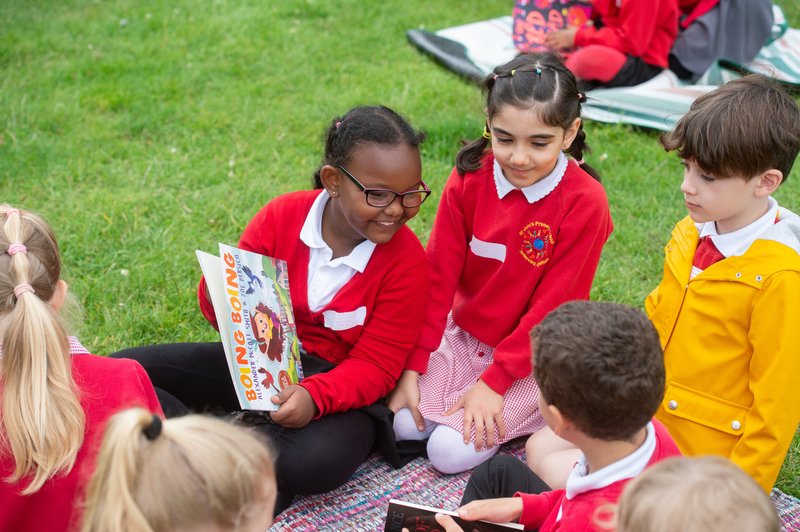The impact of reading for pleasure upon children’s life outcomes cannot be understated - with potential to improve their confidence, mental wellbeing, wider literacy skills and academic success.
In our recent report on children and young people's reading in 2025, we asked 114,970 children and young people aged 5 to 18 from 515 schools across the UK how they felt about reading. What children told us demonstrated that reading frequency and enjoyment is declining. They also highlighted opportunities for schools to rethink their approaches to reading culture in their setting. Read the full report here.
In this article for TeachBrief, we look at four key insights from this report, with strategies, resources and CPD to help you boost reading levels in your school – whether you’re senior leadership, an English teacher, a literacy lead, or a school librarian.
Four key takeaways from the report
1. Children’s reading declines as they get older – particularly following transition into secondary school
When it comes to daily reading, over twice as many children aged 5 to 8 said that they read something in their free time daily, compared with those aged 11 to 14 (44.5% vs 17.1%).
Interestingly, around the transition period, children are more likely to engage in a broader range of texts. Children aged 8 to 11 consistently show the highest engagement across various content, suggesting that younger children are more broadly connected to reading for both personal development and enjoyment. It is after this point that reading levels begin to drop off.
What can schools do?
- Prepare for transition with our Back To School resources, to help encourage reading throughout the academic year.
- Incorporate individual voices. Our collection of resources can be used across all phases to inspire both staff and pupils to find what they enjoy reading, and help shape reading culture in your school.
- Sustain pupil’s connection to reading and role-model readers through a pupil librarian and reading ambassador programme – find out how to set this up in your school.
- Celebrate your passionate readers. Each year, our National Reading Champions Quiz is an is an aspirational event that recognises and celebrates the book knowledge of more than 2,000 keen readers aged 10 to 14. Sign up to be updated when registration opens for next year’s competition.

Pupils at the National Reading Champions Quiz final in 2025.
2. Understanding what motivates children to read can help us to engage reluctant readers
In our research, we identified three key reader profiles: curious, mindful and social.
- Out of the children and young people we spoke to, curious readers (learning-focused) are the most common. Curious readers read to build knowledge and skills, such as learning new words (51.8%), understanding different views (34.4%), or learning about other cultures (28.3%). This shows us that children often see reading valuable as a learning opportunity, even among those who claim not to enjoy reading.
- Mindful readers (wellbeing-focused) are more likely to be girls and younger children. Mindful readers read for wellbeing, creativity and escapism. Many said reading helped them relax (57.2%), feel inspired (46.3%), escape (43.3%), or feel happy (39.1%). A quarter said it boosted their confidence (24.8%) or helped with problems (23.2%).
- Social readers (connection-focused) read to connect with causes they care about (23.2%), the wider world (19.1%) or other people (9.0%). This group is the least common, especially among disengaged readers.
Preferences over reading formats also vary noticeably by age. We found that, as children and young people grow, they gravitate toward more digital formats and diverse media-linked content, while traditional print reading remains strongest in the younger years. Fan fiction showed relatively steady on-screen engagement across all age groups, but printed fan fiction dropped sharply with age.
Additionally, the top motivators for those who don’t usually enjoy reading included:
- Books linked to films or TV (38.1%)
- Books that match personal interests or hobbies (37.1%)
- Eye-catching covers or titles (30.9%)
- Freedom to choose what to read (26.6%)
- Comics and graphic novels (29.2%) and magazines (21.3%) also remain popular choices.
- Digital formats dominated in other categories, with song lyrics (60.7%) and news articles (28.2%) mostly read on screens.
Personalisation and autonomy are impactful. 1 in 4 (26.6%) valued having the freedom to choose what they read.
What can schools do?
- Upskill your English and literacy teaching to support reading engagement across a variety of texts, including digital formats. Our Reading for Pleasure CPD is available for primary and secondary practitioners.
- Avoid over-reliance on group reading: Book clubs and peer discussions may not work for disengaged readers. Offer opportunities for choosing their own texts. Make time for individual reading.
- Create an accessible and inclusive reading environment. Use displays, reading corners and book-themed events to make reading feel special. Create opportunities for pupils to choose their own books to read.

Our research showed that children value autonomy in choosing what they read.
3. Boys are increasingly reading less
Between 2024 and 2025, daily reading rates dropped more steeply among boys than girls, widening the gender gap to 6.2 percentage points, the largest since 2023.
Boys’ enjoyment of reading declined across most age groups, particularly those aged 11 to 16, while girls’ enjoyment remained relatively stable or slightly improved. Additionally, more girls than boys said that they read something daily in their free time in 2024, regardless of whether they were aged 5 to 8 (48.3% vs 41.0%) or 8 to 18 (21.6% vs 15.4%).
But what did boys tell us they enjoy reading? Curious reading, associated with learning and discovery, is nearly equal between boys and girls, suggesting a shared drive for knowledge. Interestingly, marginally more boys than girls identify as social readers, indicating a slightly higher inclination among boys to read for awareness and connection to issues or causes.
More boys than girls told us that they read comics and graphic novels at least once a month in their free time, particularly in print. While gender differences were evident in the types of content and formats preferred, both boys and girls are engaging with reading in ways that reflect their individual interests and media habits – both showing similar levels of engagement with news articles and non-fiction books across both formats.
What can schools do?
- Nurture non-fiction enjoyment through a love of sport – this blog explores strategies to encourage non-fiction reading across the curriculum, including book chat in PE!
- Use our #GrowAGenerationOfReaders stickers to highlight the content of a text and draw interest.
- Graphic novels can be a fantastic opportunity to boost literacy skills. Maximise on these benefits with The Big Picture, a one-day CPD where you’ll explore strategies to employ picture books and comics in the classroom.

Boys told us that they engaged with reading in ways that reflect their individual interests and media habits.
4. There is a persistent gap in reading frequency, linked to socioeconomic background.
More children and young people who didn’t receive FSMs told us that they read daily in their free time, compared with their peers who received FSMs (19.4% vs. 15.8%).
Additionally, for children on FSMs, reading dropped slightly from 19.3% in 2024. As a result, the gap between FSM and non-FSM pupils, which had nearly closed in 2024 (just 1.3 percentage points), has widened again in 2025 to 3.6 percentage points, the largest disparity since 2021.
What can schools do?
- Enable accessibility. Considering the broad range of texts available – which can sometimes be more accessible to children from low-income families - it is important to celebrate and encourage engagement with other formats such as song lyrics, video games and on-screen reading, throughout the curriculum.
- Support individual reading identity. Book ownership, diversity and representation play a huge role in reading engagement. Find out how our Young Readers Programme supports school children in disadvantaged areas. 99% of teachers who took part in the programme in 2024 told us that they noticed positive changes in pupils' reading enjoyment because of the programme.
- Representation matters. We know that children and young people are more likely to engage with content where they see themselves reflected. Check out our Young Readers booklists for ages 5 – 13+, to inspire children’s next good read.
Let's summarise: children and young people's individual reading identities are what make up reading culture in schools. By allowing autonomy in choice, personalising reading opportunities around pupil's interests, and forging the links between reading and the media in pupil's cultural life, we can co-create a vibrant reading culture that boosts children's learning outcomes - and celebrates their own connection to reading for pleasure.
